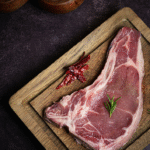A Low Iodine Diet is a short-term eating plan designed for people preparing for radioactive iodine treatment, especially those with thyroid cancer or thyroid-related conditions. This diet helps reduce the body’s iodine levels, making treatment more effective. In this blog, we will explore what a low iodine diet is, its benefits, and a complete list of foods to eat and avoid.
What is a Low Iodine Diet?
A low iodine in diet limits iodine intake to about 50 micrograms or less per day.Iodine is mainly present in iodized salt, seafood, dairy, and processed foods. As a result, reducing iodine intake helps the thyroid gland absorb radioactive iodine more effectively during medical treatment.
Foods You Can Eat
Here are some foods allowed on a low iodine diet:
- Fresh fruits (apples, bananas, grapes, oranges, melons)
- Fresh vegetables (carrots, potatoes, onions, spinach, cucumbers)
- Unsalted nuts and nut butters
- Homemade bread without iodized salt
- Fresh meat (chicken, beef, lamb, turkey) – in moderation
- Egg whites (but avoid yolks)
- Oils (olive oil, sunflower oil, vegetable oil)
- Rice, oats, and pasta without added salt
- Black coffee and tea (without milk or creamer)
Foods to Avoid
To follow a low iodine avoid:
- Iodized salt and sea salt
- Seafood (fish, shrimp, seaweed, shellfish)
- Dairy products (milk, cheese, butter, yogurt, ice cream)
- Egg yolks
- Processed foods (canned soup, fast food, packaged snacks)
- Soy products (soy milk, tofu, soy sauce)
Benefits of a Low Iodine Diet
- Improves effectiveness of radioactive iodine treatment
- Reduces iodine in the thyroid gland
- Helps doctors better evaluate thyroid function
- May reduce thyroid hormone levels before treatment
Patients usually follow the low Restricted Salt Diet for 1–2 weeks before treatment and a few days afterward. Always consult your doctor or dietitian before starting this diet.
The low iodine plays a vital role in preparing patients for radioactive iodine therapy. By carefully choosing foods that are low in iodine and avoiding high-iodine foods, patients can improve the success of their treatment.
👉 For more health and nutrition blogs, visit HealthMahiti.com


